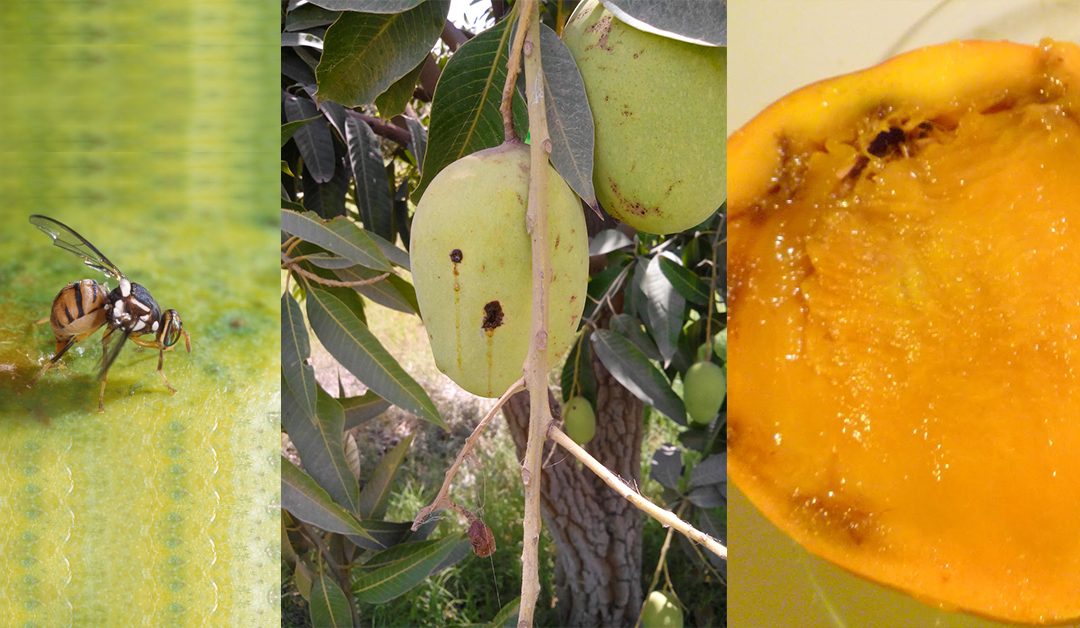Mango the delish wonder of nature is an important export item of Pakistan. But this delish fruit can be easily attacked by fruit fly species to both the qualitative and quantitative extent of damage that can halt the entire export from affected orchards.
What are Fruit flies?
Fruit flies belong to Phylum Arthropoda (Insects). They are a little bigger than the houseflies. Color varies between red, black, and yellow, but their mode of infestation, reproduction, and causing damage is almost the same.
Mango Fruit fly species found in Pakistan
In Pakistan, the two highly invasive polyphagous species with a wide host range namely Bactrocera dorsalis (also known as Oriental Fruit fly) and Bactrocera zonata are found. These species attack fleshy plants.
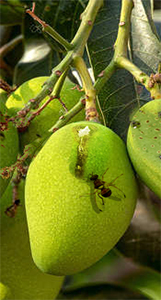
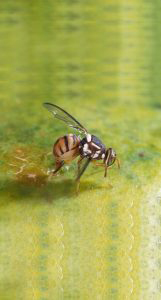
Host Plants
Bactrocera dorsalis has the broadest range over 300 edible and wild hosts. The main hosts of B. dorsalis are Mango, Guava, Peach, Apple, Pear.
Bactrocera zonata prefers Peach, Mango, and Guava as primary hosts, while Apricot, Citrus, and Fig as the secondary hosts.
Mode of Infestation
The female fruit flies lay their eggs under the mango skin via oviposition. It is evident that a normal female fly lays 10-50 eggs in clusters 1/25 to 1/8 inches below the mango skin. The eggs on hatching proceed to the larvae that feed upon the mango by penetrating the internal tissue via digging tunnels. In the second and third developmental stages, larvae eat up the mango inside and cause complete deterioration of the pulp. These larvae drop on the ground and convert into pupae, which turn into adults within 10 days.
Symptoms:
The fluid exudes out from the minute site of oviposition puncture in the droplet form, which later dries into a brown resinous deposit spot.
Prevention & Control
Following are the four methods of pest prevention and control.
1. Physical control
Physical technique to wrap or bag each fruit individually into protective covering bags proves to be an effective way of prevention. This prevents the oviposition by fruit flies. Some farmers use white while others use brown covers. Since it can be used only during the pre-harvest period (a month or two weeks before harvest) therefore it is the most effective and the most expensive method of pest prevention.
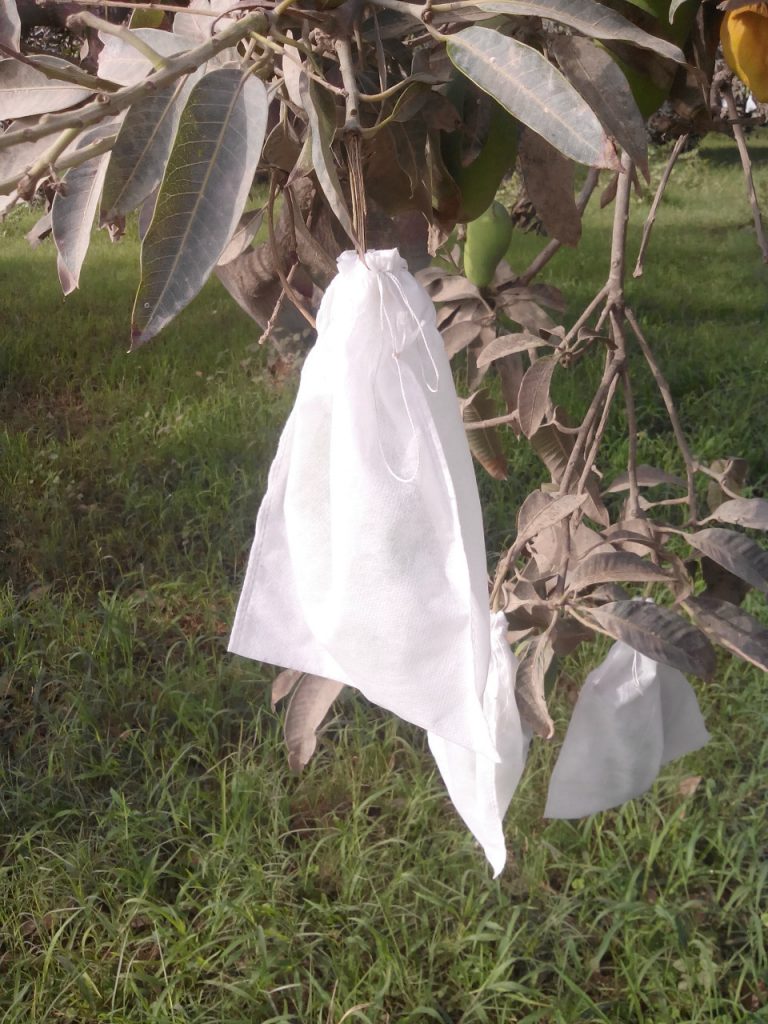


2. Biological control
In this method, the population of fruit flies is controlled by enhancement and conservation of parasitoids to the mango orchards. Such parasitoids are their natural enemies which eat up on the fruit flies and their larvae. Among them, Diachasminorpa longicaudata and Trybiographa daci are the two main parasitoids of mango fruit flies. Introducing foreign natural enemies and enhancing local ones can help in the long-term management of the fruit flies.
3. Chemical control
Chemical control can be done by two methods; i. Toxicants in baits ii. Sprays
The use of toxicant attractants as traps is one of the most effective and safe methods to determine the presence or absence, population volume of the fruit flies, monitoring, tracking, and killing the pest. The traps are installed to control the population of fruit flies. Protein baits sprays can help in pest control too.
Male Annihilation Technique (MAT):
The MAT works on the principle of the pheromone trap. It is a recognized fact that male flies are attracted to the smell of methyl eugenol even in very small concentrations. Hence, this technique traps and kills the male fruit flies. This is an effective yet safe method to halt the population by rendering the female fruit flies infertile.
These fly traps consist of plastic containers which can be simple plastic buckets, that contain the male lure hung inside. This lure is a piece of cotton or plywood soaked into the solution of methyl eugenol (attractant) and Malathion (insecticide) for a week. The containers are tied at a density of 16 blocks per hectare. It will last for six months.
However, some farmers use Methyl eugenol and malathion solution-soaked jute sacks too.
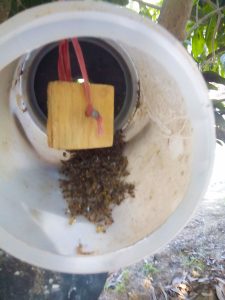
(Pheromone Bucket Trap)
Protein Baits Trap
This trap attracts female fruit flies particularly but can also attract male flies as well. The proteinaceous liquid sprays when combined with bait serve to attract female adult fruit flies. The mixture is applied as a spot or thin band spray at 2m height. The spray volume may vary depending on the height of the tree. There are different proteins and baits used by different producers to control fruit flies.
4. Cultural control and Sanitation
In case of infested mangoes that fall on the ground, collect and bury them deeper in the soil. This practice avoids any chances of reinfestation.
Besides, ploughing of the soil is recommended to kill if any larvae or pupae present in the soil by exposing them to sunlight. Removing weed and unnecessary plant growth from the soil can add up to good sanitation practices.
The six mango growers collaborating with SMGE prevent & control this destructive mango pest infestation by using more than one method. They apply the Male annihilation technique (MAT), Cultural control & sanitation, and Physical control methods altogether to get long-term results. This is one of the reasons we produce the quality of mango which is exportable and up to the mark.

